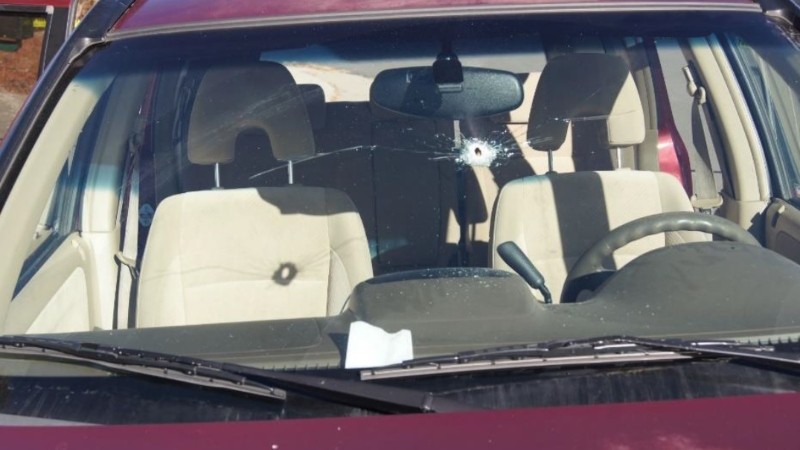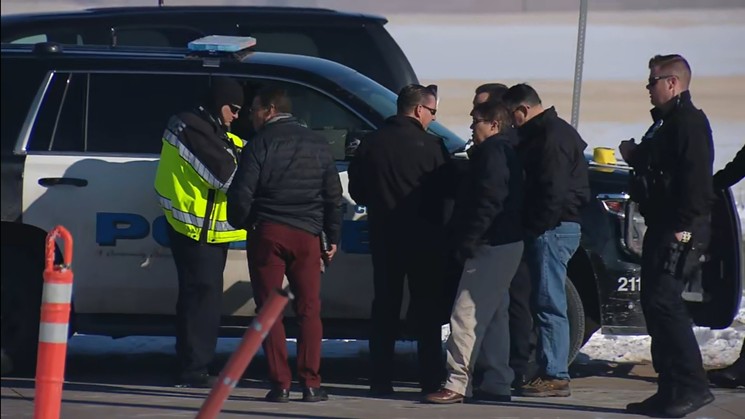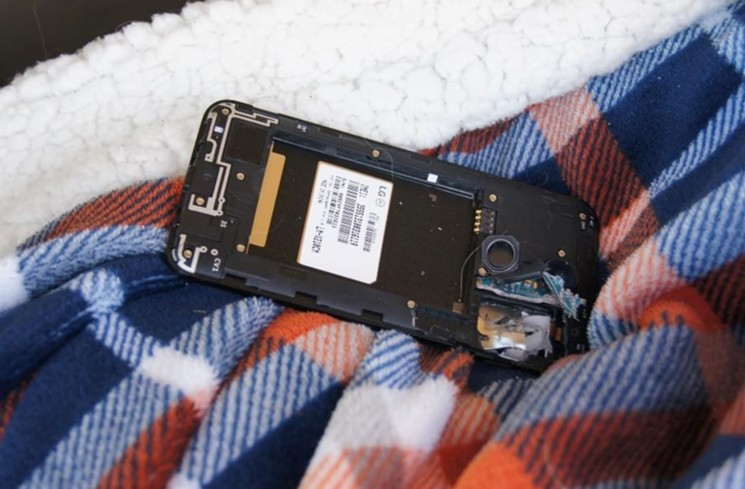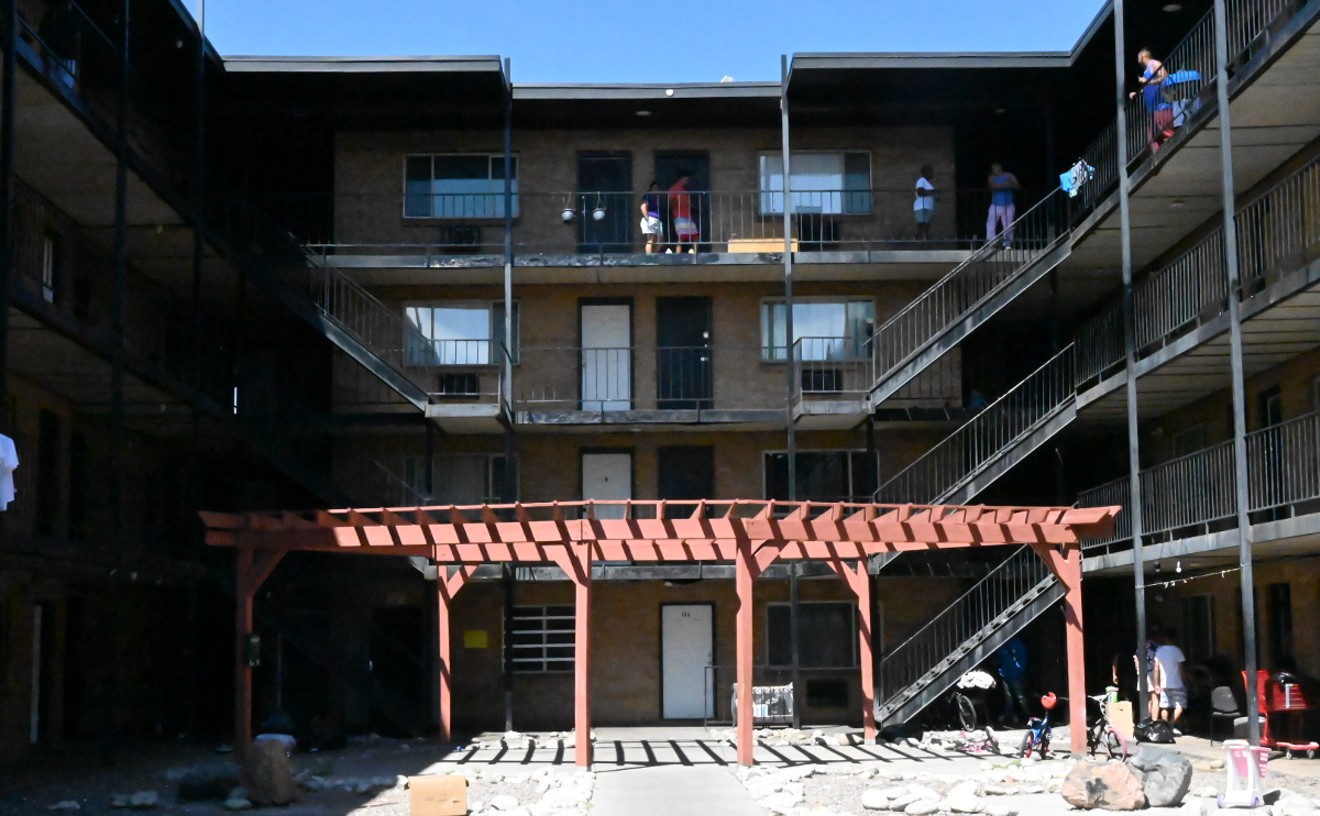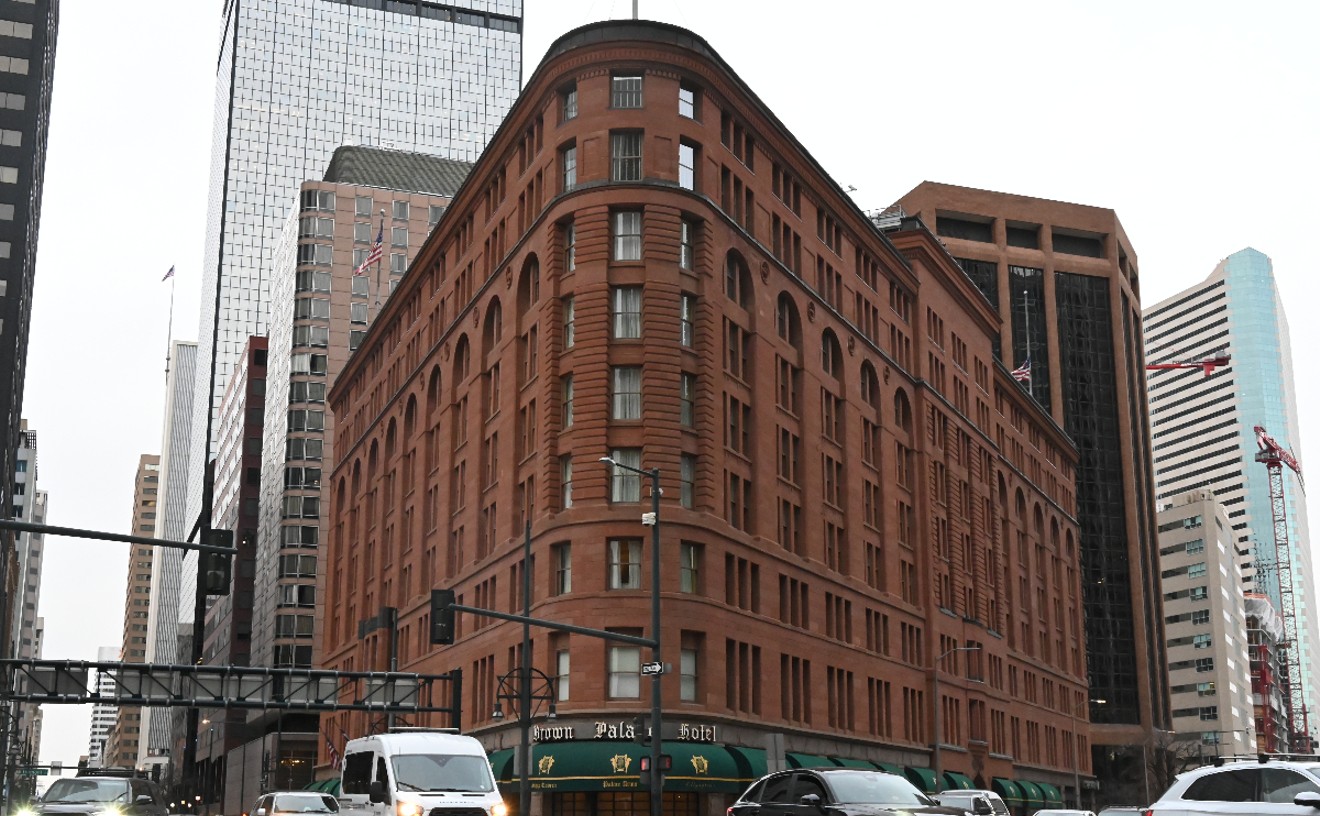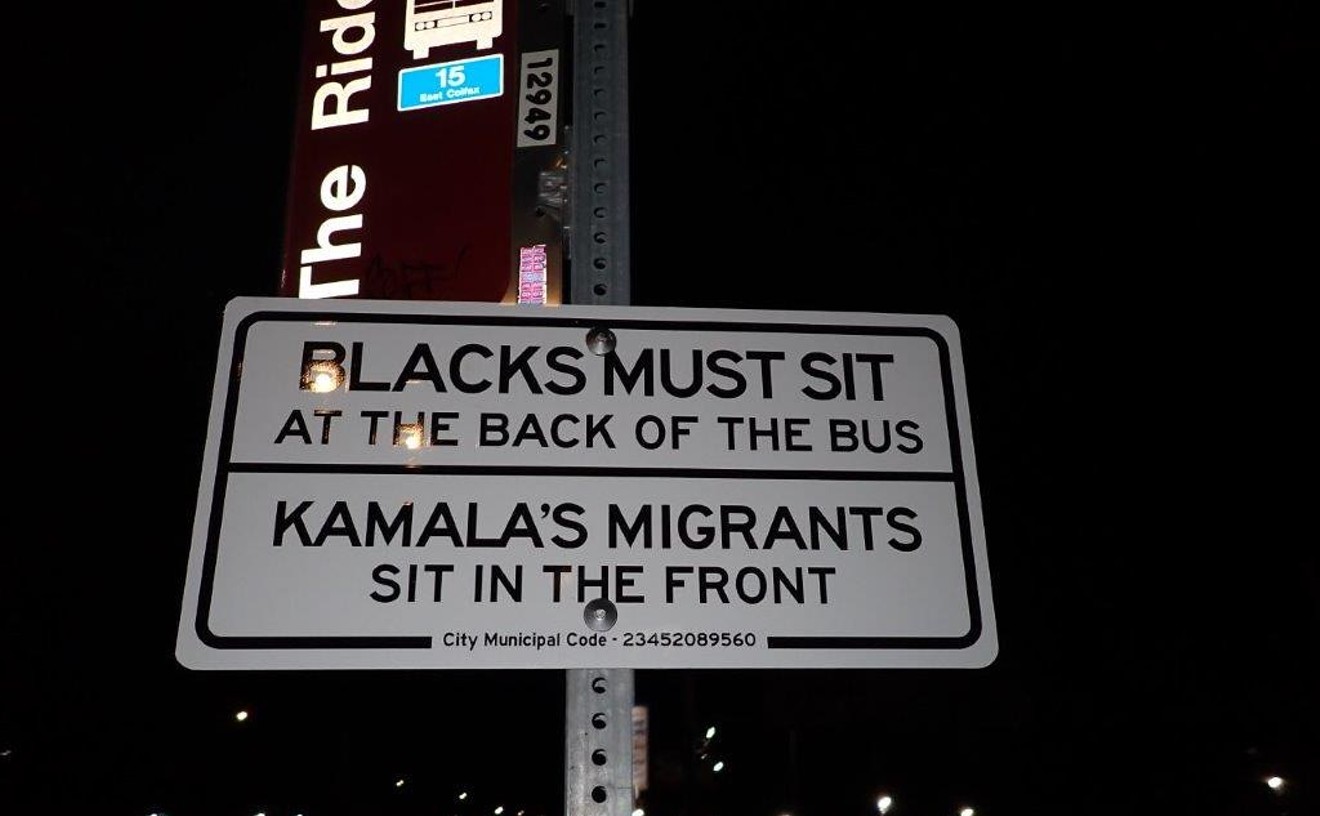The latest batch of prosecutor decision letters related to police shootings in the metro area supports that view. Six have been released in the last month, from June 8 through July 7, and even though they're from a variety of jurisdictions (the 17th and 18th judicial districts, as well as the Denver District Attorney's Office), they share much in common. While two of the incidents took place in May, the other four are from months ago — January and February — and few of them received more than cursory attention in the media. In at least half of the cases, the victims were people of color; because one was a juvenile who survived the shooting, his identification hasn't been revealed. And in all six, the cops at the center of the inquiries weren't found to have acted criminally.
Granted, most of the suspects shot at or slain by police were armed. But that wasn't the case with the juvenile, who was targeted after picking up a cell phone that a cop managed to drill. Afterward, the officer said, "Ah, shit."
Here are the summaries and conclusions excerpted from the six decision letters, in the order of their public release:
January 22, 2020 shooting of Diego Gallegos by Deputy Trevor Cuaz
Release date: June 8
Summary:
On January 22, 2020, members of the Arapahoe County Sheriff’s Office (“ACSO”) and East Metro Auto Theft Task Force (“EMATT”) learned that Diego Gallegos would be delivering drugs in a stolen vehicle to the Cornerstar Ranch Apartments located near S. Parker Road and S. Chambers Road. Uniformed and undercover deputies responded to the apartment complex to arrest Mr. Gallegos. Sgt. Todd Fechner was driving an unmarked Ford F150 (“F150”) with Deputies Alan Wilson and Trevor Cuaz. Mr. Gallegos arrived at the complex driving a stolen Chevrolet Silverado Super Sport (“Silverado”).1 He backed into a parking spot but did not get out of his vehicle. Sgt. Fechner drove his F150 directly in front of the Silverado placing his front bumper against the Silverado’s front bumper. Deputies Wilson and Cuaz immediately got out of the F150 and approached the Silverado yelling at Mr. Gallegos to show his hands. Mr. Gallegos attempted to drive forward into the F150 to escape. When that was unsuccessful, Mr. Gallegos drove backwards, pinning Deputy Wilson between the Silverado and a Ford Escape parked in the adjacent space. Deputy Wilson received serious bodily injury from being crushed between the two vehicles. Mr. Gallegos reversed onto a grassy area and crashed into an electrical box. Mr. Gallegos then drove forward towards the parking space where he previously struck Deputy Wilson. Deputy Cuaz fired his weapon eight times to protect Deputy Wilson and himself. Mr. Gallegos was struck three times, rounds grazed his head and chest, and one penetrated his left arm. Mr. Gallegos crashed the Silverado into several parked cars and he was immediately arrested. Mr. Gallegos survived the gunshot wounds and is facing criminal charges for his actions.
Conclusion by 18th Judicial District Chief Deputy District Attorney Jason Siers:
The question presented is whether Deputy Cuaz reasonably believed that the use of deadly physical force was necessary to defend himself or others from what he reasonably believed to be the imminent use of deadly physical force. Deputy Cuaz’s actions were reasonable and justifiable based on Diego Gallegos’s actions. Deputy Cuaz observed Mr. Gallegos disregard Deputy Wilson’s lawful commands to stop. Mr. Gallegos attempted to escape by forcing his vehicle past the F150. When that did not work, Mr. Gallegos intentionally drove backwards attempting to escape the officers and, in so doing, pinned Deputy Wilson between two vehicles causing serious bodily injury. After striking the electrical boxes, Mr. Gallegos then drove forward towards the deputies. Mr. Gallegos posed a specific and imminent threat to Deputy Wilson and himself. I find that Deputy Cuaz reasonably believed that Mr. Gallegos posed an imminent threat of deadly physical force to Deputy Wilson and himself when he drove towards the deputies. As such, I find that Deputy Cuaz was justified in using deadly physical force against Diego Gallegos to defend Deputy Wilson and himself from the imminent use of deadly physical force. No criminal charges will be filed against Deputy Cuaz.
May 28, 2020 Shooting of Steven Ferguson by Deputy James Stiltner
Release date: June 12, 2020
Summary:
On May 28, 2020, Arapahoe County Sheriff’s Deputy Draper was on routine patrol in the vicinity of the Days Inn at 9719 East Geddes Avenue in Centennial. Deputy Draper identified a stolen vehicle in the parking lot of the Days Inn and was preparing to impound the vehicle. Deputy Stiltner arrived to provide backup when they saw the stolen vehicle moving. Both deputies approached in their fully marked vehicles to prevent the stolen vehicle from leaving. Deputy Stiltner parked his patrol car behind the stolen car. The driver of the stolen car, Steven Ferguson, attempted to reverse and drive over the hood of Deputy Stiltner’s patrol car. Mr. Ferguson quickly exited the stolen car and began to run away while Deputy Stiltner began to pursue him. Mr. Ferguson reached for his waistband, pulled out a gun and pointed it at Deputy Stiltner. Deputy Stiltner fired three times, striking Mr. Ferguson in the upper torso. Deputy Draper’s K9 Kilo engaged Ferguson and bit him on the back of his head and neck. Deputy Stiltner immediately began lifesaving efforts, however, Mr. Ferguson died at the scene. It was determined that Mr. Ferguson was in “escape” status with an active warrant from the U.S. Marshals after running away from a halfway house in Denver. Mr. Ferguson was serving a federal sentence for weapons and drug violations. Mr. Ferguson also had an active warrant from the Denver Police Department related to a domestic violence incident, robbery and carjacking that occurred on May 25, 2020.
Conclusion by 18th Judicial District Chief Deputy District Attorney John E. Kellner:
Based on my review of all the evidence in this case, I find Deputy Stiltner did not commit a crime when he fired three rounds at Mr. Ferguson on May 28, 2020. Mr. Ferguson clearly pointed a gun at Deputy Stiltner, causing the Deputy to reasonably fear for his life and the life of Deputy Draper. This is true even though the gun was later determined to be a CO2 pistol because there were no markings on the gun to make it appear like a CO2 gun. Indeed, the gun appears designed to look real in every aspect, including being loaded with what appear to be real bullets. The body worn cameras of Deputy Stiltner and Deputy Draper clearly corroborate the deputies’ statements. Moreover, the statement of who witnessed the event corroborates that Mr. Ferguson pointed the gun at Deputy Stiltner. As a result, I conclude the evidence does not support that Deputy Stiltner committed a crime. The evidence supports he reasonably believed he was in imminent danger of the use of unlawful physical force by Mr. Ferguson, which justified the use of deadly force on May 28, 2020.
February 14, 2020 Shooting of David Heeke by Officer Andrew Saracino
Release date: June 18
Summary:
On February 14, 2020, officers were dispatched in response to a call of shots fired at 11340 Iola Street. The reporting party, Christine Trujillo, said that at approximately 7 a.m., she got into her vehicle, which was parked in her garage. As she backed her vehicle out of the garage, down the driveway and onto the street she saw a pickup truck driving directly toward her vehicle's front bumper. As the truck approached, she realized the driver was her ex-husband, David Heeke. Mr. Heeke drove his truck in her direction until he struck the front of Ms. Trujillo's vehicle with the front of his truck. Mr. Heeke then got out of his truck. Ms. Trujillo began to exit her vehicle as well and saw that Mr. Heeke had a handgun. Ms. Trujillo got back into her vehicle and put her car in reverse to flee the scene honking her vehicle's horn in an attempt to get her neighbors' attention. Mr. Heeke fired two gunshots at Ms. Trujillo as she drove away. Both gunshots missed her and her vehicle. Ms. Trujillo's Ring Doorbell camera system at her residence recorded this event.
Ms. Trujillo drove away from the area and immediately called 911. The 911 dispatcher advised her to stop to talk to a police officer. Ms. Trujillo pulled over at a nearby Shell gas station where officers later contacted her.
Mr. Heeke fled the scene of the shooting driving a white 1980s model Ford pickup truck. As police officers were arriving into the area of the shooting, officers located Mr. Heeke's truck in the area of 104th Avenue at Potomac Street and attempted a traffic stop. Mr. Heeke failed to stop for officers and led officers on a pursuit to the area of 104th Avenue at Blackhawk Street. Mr. Heeke eventually slammed on the brakes of his truck and hit another vehicle traveling in front of his truck. Officers completed a high risk traffic stop. During the traffic stop, Mr. Heeke failed to comply with officers' verbal commands to get out of the truck and show them his hands. Mr. Heeke remained in his truck, seated in the driver seat with the driver side door open with his body facing out of the truck. Mr. Heeke failed to show officers both of his hands and made a statement that he could not show his right hand because he had a gun. Mr. Heeke abruptly moved his body towards the officers on the scene, while he brought his right arm and hand in an upward motion towards the officers. Officers discharged their firearms, striking and killing David Heeke. The handgun that Mr. Heeke had in his right hand was found on scene next to his body.
Conclusion by 17th Judicial District DA Dave Young:
Under the circumstances of this case, all officers were attempting to effect a stop and arrest of Mr. Heeke for his actions of committing a felony for shooting Ms. Trujillo. All four involved officers had a reasonable belief that Mr. Heeke was armed and dangerous based on the information Ms. Trujillo provided to dispatch. When Mr. Heeke stopped his pickup truck and the officers approached and began to give him loud verbal commands to get out of the truck and show them his hands, Mr. Heeke admitted he was holding a gun in his right hand, and did not comply with the officers' commands. The body worn camera footage shows Mr. Heeke rapidly turn his body toward the officers while raising his right arm. Mr. Heeke's actions dictated the officer's response as it was reasonable for the involved officers to conclude that Mr. Heeke was about to use deadly force towards them based on the totality of the circumstances involved in this investigation.
The body worn camera footage and the scene investigation supports the summary of facts the four involved officers provided. There is no evidence to dispute that Officer Sarcino, Officer Morales, Officer Neville and Sergeant Darling fired their weapons at Mr. Heeke because they reasonably believed it was necessary to defend themselves from what they perceived to be the imminent use of deadly physical force by Mr. Heeke. Therefore, the prosecution cannot prove that the officers' actions were not justified beyond a reasonable doubt to a jury....
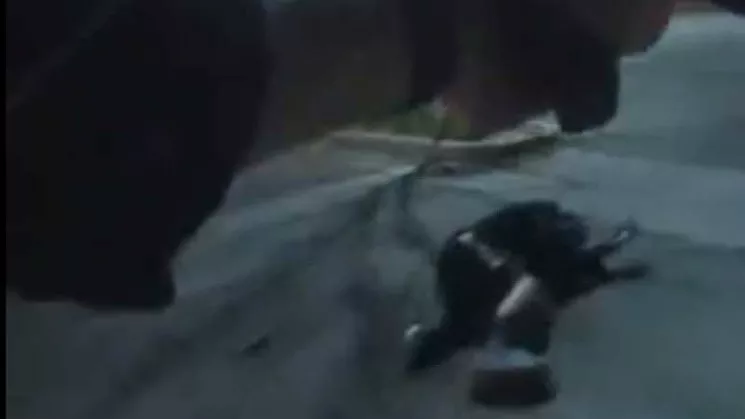
Mortally wounded William DeBose, from a May 1 video captured by a body camera worn by Denver Police Officer Blake Bishop
Denver District Attorney's Office
Release date: June 18
Summary (excerpted from our June 19 post "William DeBose Police Shooting Video: No Charges, Fresh Outrage"):
At around 10:20 p.m. on May 1, according to the decision letter, Corporal Ethan Antonson, a member of the gang unit, received a call from a colleague "requesting the assistance of 'Air-1,' the DPD helicopter, to track a blue and white Chevy Caprice traveling at a high rate of speed on I-25."
Antonson intercepted the Caprice after it exited the highway and ultimately followed it to the parking lot of the Rodolfo "Corky" Gonzales Public Library, located near the intersection of Colfax and Irving Street. There, DeBose left the vehicle, as did passenger Sierra Martinez-Griego, his common-law wife, and began walking away while Air-1 hovered overhead. The letter stresses that Antonson, who had been joined by Officer Blake Bishop, didn't immediately take out his weapon. Instead, he told the couple, "Stay right there for me, both of you, hands up in the air. Just stay right there for me."
Instead, DeBose took off running, and Antonson gave chase. "About five seconds after Mr. DeBose began to run, Corporal Antonson passed the last vehicle in the row of cars," the account states. "There he saw Mr. DeBose as he was about to enter the parking lot. Corporal Antonson moved towards him in an effort to close the distance between himself and Mr. DeBose. At this point, Mr. DeBose reached across his body, pulled a handgun and rotated his arm towards Corporal Antonson. Corporal Antonson yelled 'On the ground!' and quickly drew his firearm. Corporal Antonson fired his gun four times until Mr. DeBose fell to the ground."
DeBose was transported to a nearby hospital, where he was declared dead.
Conclusion by Denver District Attorney Beth McCann:
The autopsy showed that DeBose had been shot in the chest and the leg from the front, which McCann sees as evidence that he'd turned and faced Antonson. In addition, a gun was found near DeBose's body — another factor in McCann's conclusion that he had indeed trained his weapon on Antonson, despite the video of that moment being rather indistinct.
These various elements persuaded McCann that she would be unable to convince a jury beyond a reasonable doubt that Antonson's actions had been illegal. "The chase and shooting lasted less than ten seconds," she wrote. "Corporal Antonson had to make a split-second judgement while running at full speed. His judgement that Mr. DeBose was pointing a handgun at him and about to kill him was reasonable; therefore, it was reasonable and lawfully justified for Corporal Antonson to defend himself with deadly physical force under Colorado statutes."
January 8, 2020 Shooting of Juvenile S.R. by Officer Darryll Huntsman
Release date: June 22
Summary:
On January 8, 2020, Aurora Police Department (“APD”) dispatch received a 911 call concerning a possible burglary. The 911 caller described a Honda CRV associated with the suspects. APD Officer Darryll Huntsman responded to the area and located the Honda CRV in front of 17601 East Tennessee Place. He was the first officer to arrive on scene. Officer Huntsman exited his vehicle and approached the Honda CRV with his handgun drawn. Officer Huntsman observed the occupant of the vehicle, later identified as S.R., “pop up” in the backseat, raising a black object in his hand. Officer Huntsman observed what he thought was a handgun in S.R.’s hand. Fearing for his life, he fired one round through the front windshield of the CRV, striking what was later determined to be a cell phone in S.R.’s hand. S.R. sustained a blister wound to his finger.
Conclusion by 18th Judicial District Chief Deputy District Attorney Vicki Klingensmith:
Based on my review of all the evidence in this case, I conclude the evidence supports Officer Huntsman reasonably believed he was in imminent danger when he fired one round, striking the black object in S.R.’s hand on January 8, 2020. However, Officer Huntsman’s statement of “ah shit” after he fired only one round gave me concern. That statement could be interpreted a number of different ways. Officer Huntsman told detectives he had an “oh shit moment,” because he thought he could be shot. S.R. and the damaged cell phone corroborate the fact that Officer Huntsman observed a dark object in S.R.’s hands. Officer Huntsman stated he believed the object was a handgun and he feared for his life. I must base my conclusion on evidence rather than speculation.
As a result, I conclude the evidence supports Officer Darryl Huntsman reasonably believed he was in imminent danger, which justified his use of force on January 8, 2020.
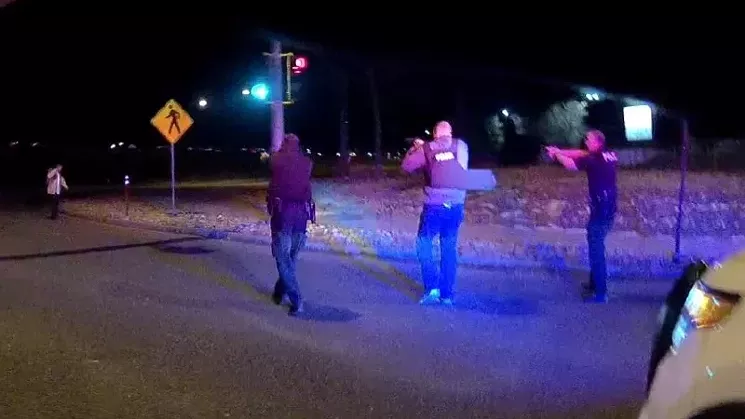
A screen capture showing three officers aiming their firearms at the late Nico Descheenie.
18th Judicial District
Release date: July 7
Summary:
On January 6, 2020, a fixed license plate reader located at 6th Avenue and Federal Boulevard notified the Denver Police Department’s District 4 Impact Team (“Impact Team”) that a stolen Chevrolet Avalanche (“Avalanche”) was driving south on Federal Boulevard. The Impact Team, consisting of marked and unmarked vehicles, responded to the area and located the stolen Avalanche. The Impact Team deployed “Starchase,” a GPS dart, to the rear of the Avalanche allowing the Impact Team to safely follow the vehicle from a distance. The Impact Team followed the Avalanche for approximately one hour through the Denver Metro area and into the City of Aurora. The driver, later identified as Nico Descheenie, date of birth 1994, abandoned the Avalanche behind ExtraSpace Storage located at 2240 South Xapary Way, Aurora. Denver Police Officers Benavides and Heckenkamp observed Mr. Descheenie fleeing the area on foot. Officer Heckenkamp chased Mr. Descheenie to the eastbound lanes of East Iliff Avenue and I-225. Denver Police Sergeant Hyatt and Officers Chris Parton and Fernando Benavides joined Officer Heckenkamp on East Iliff Ave. and attempted to arrest Mr. Descheenie. Mr. Descheenie disobeyed the officers’ commands and pulled a handgun from his jacket pocket and pointed it at his own head. Officer Heckenkamp ordered Mr. Descheenie to “drop the weapon” and “don’t do it.” Mr. Descheenie backed away from the officers, crossed the median to the westbound traffic lanes and attempted to carjack [Ms. Al Dahlaki] by pointing his handgun at her and motioning her to get out of her car. [Ms. Al Dahlaki] was scared and drove away from Mr. Descheenie. Mr. Descheenie turned and pointed his handgun at Officer Heckenkamp and Sergeant Hyatt. Sergeant Hyatt attempted to shoot Mr. Descheenie, however his weapon had a mechanical malfunction and did not fire. Officer Heckenkamp fired his weapon at Mr. Descheenie fourteen times striking him five times. Denver Police Officers approached Mr. Descheenie, secured the handgun, and provided medical treatment until emergency medical personnel arrived. Mr. Descheenie was transported to the Medical Center of Aurora where he died from his injuries. The Aurora Police Department (“APD”) responded to the scene after the shooting and conducted their investigation.
Conclusion by 18th Judicial District Chief Deputy District Attorney Jason Siers:
The question presented is whether Officer Heckenkamp and Sergeant Hyatt reasonably believed their use of deadly physical force was necessary to defend themselves or others from what they reasonably believed to be the imminent use of deadly physical force by Mr. Descheenie. Officer Heckenkamp and Sergeant Hyatt’s actions were reasonable and justified based on Mr. Descheenie’s actions. Mr. Descheenie’s actions included attempting to carjack Ms. Al Dahlaki and her two year old daughter by the use of a firearm and then turning and pointing his handgun at the officers. Officer Heckenkamp and Sergeant Hyatt did not communicate their intent to shoot Mr. Descheenie but both, separately, made the same decision to shoot based on the imminent, deadly threat posed by Mr. Descheenie. Mr. Descheenie would still be alive if he had not threatened a mother and her daughter and then police officers with a firearm. Mr. Descheenie is solely responsible for his death. I find that Officer Heckenkamp and Sergeant Hyatt reasonably believed that Mr. Descheenie posed an imminent threat of deadly physical force to both of them and nearby motorists. As such, I find that Officer Heckenkamp and Sergeant Hyatt were justified in using deadly physical force against Nico Descheenie to defend themselves and nearby motorists from the imminent use of deadly physical force. Officer Heckenkamp and Sergeant Hyatt did not commit a crime and criminal charges will not be filed against them.

